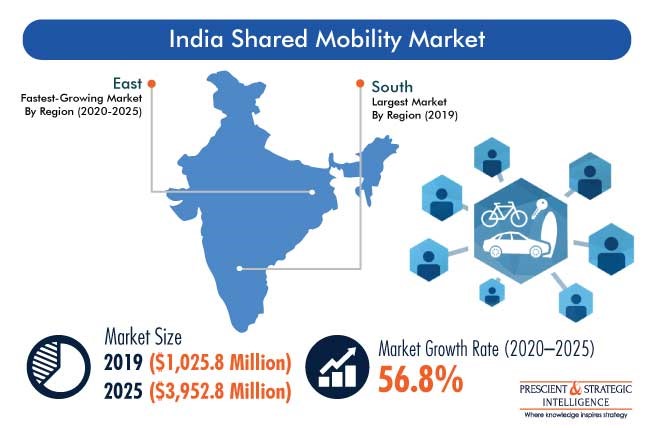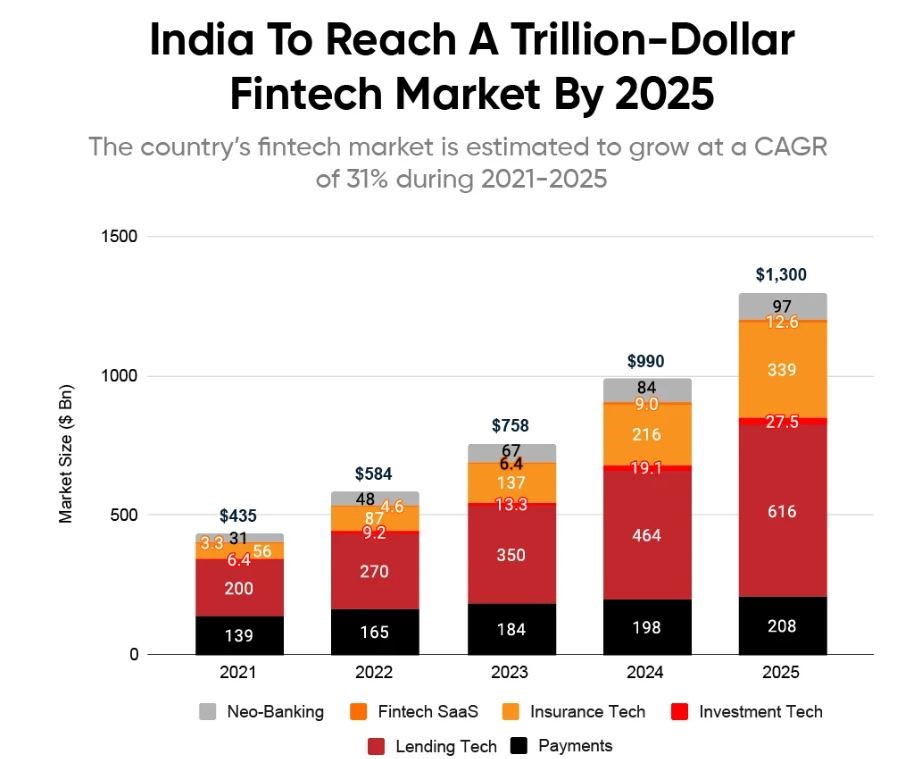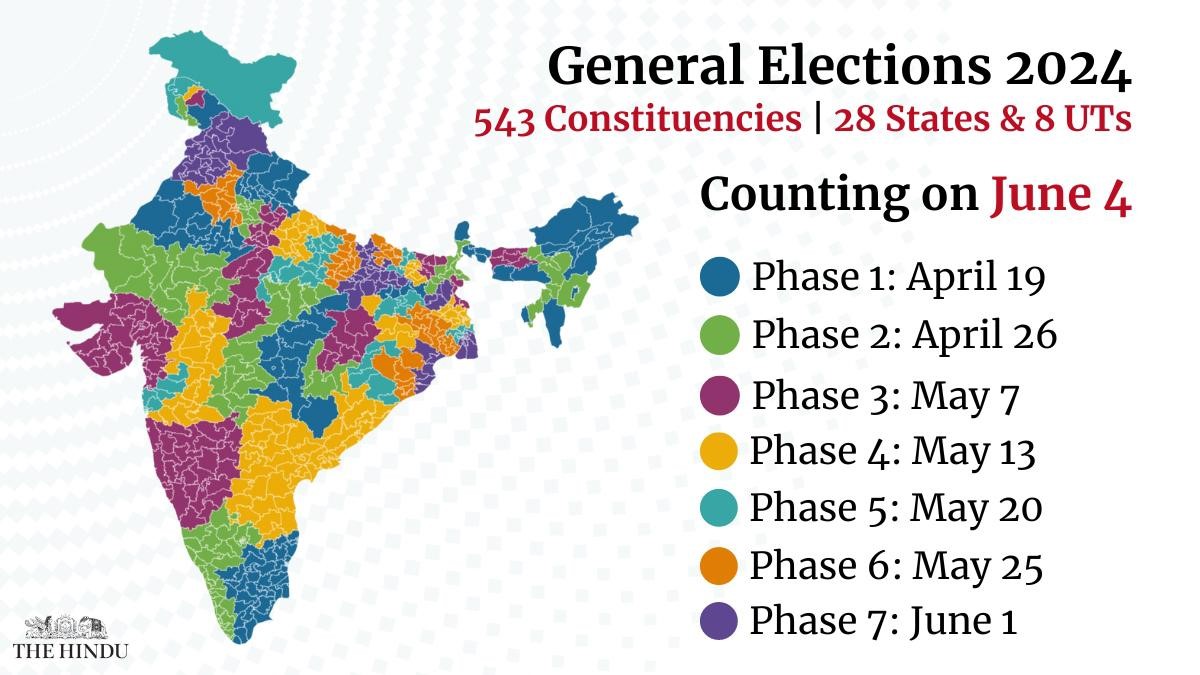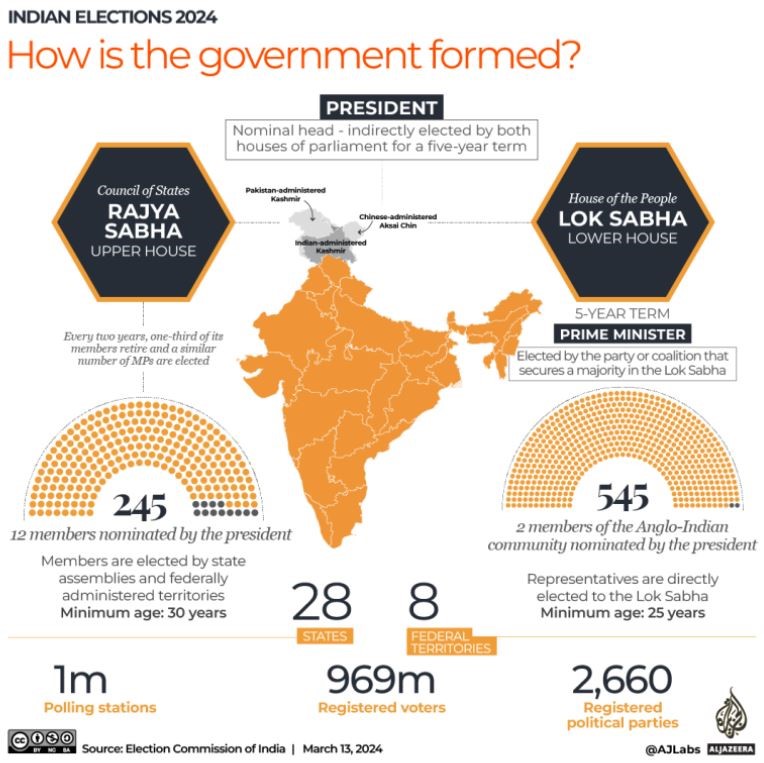Sansad TV and AIR Summary
March 3nd Week
Electric Mobility Promotion Scheme 2024
In news
Recently, the Union Ministry of Heavy Industries announced the Electric Mobility Promotion Scheme 2024 which will support electric 2-wheelers, 3-wheelers, and e-rickshaws.
|
The central government in March 2024 announced a new scheme of Rs 500 crore to promote the sale of electric two and three-wheelers. The Electric Mobility Promotion Scheme 2024 is a special 4-month electric mobility promotion till July.
|
Electric Mobility Promotion Scheme 2024
- The Electric Mobility Promotion Scheme 2024 (EMPS 2024) scheme is being introduced by the Ministry of Heavy Industries, Government of India with the approval of the Department of Expenditure, Ministry of Finance to further accelerate the adoption of EVs in the country.
- The EMPS Scheme launched in March, 2024 is aimed to promote e-mobility in the country.
- The government increased the funding under the Faster Adoption & Manufacturing of Electric Vehicles in India (FAME-II) program in February 2024 from Rs 10,000 crore to Rs 11,500 crore. Electric two-, three-–, and four-wheelers sold until March 31, 2024, or until funds are available, whichever comes first, would be eligible for these demand incentive subsidies.

Copyright infringement is disclaimed
Eligible EV categories
i) Two Wheelers (electric) (e-2W).
ii) Three-wheeler (electric) including registered e-rickshaws & e-carts and L5 (e-3W).
- The Scheme promotes an efficient, competitive and resilient EV manufacturing industry in the country thereby promoting the Prime Minister’s vision of Aatma-Nirbhar Bharat.
- For this purpose, Phased Manufacturing Programme (PMP) has been adopted which encourages domestic manufacturing and strengthening off EV supply chain.
- This shall also create significant employment opportunities along the value chain.
Eligibility Criteria for Electric Mobility Promotion Scheme
- Only two and three-wheelers are eligible for this scheme.
- Even though the government is providing incentives for the e2W and e3W categories, the new plan will not provide any incentives of this kind for e4W and e-buses.
Features of Electric Mobility Promotion Scheme
- The scheme aims to support the industry and get it ready for a post-subsidy environment.
- The program will run for four months starting on April 1.
- The purpose of the special program is to boost sales of electric rickshaws, two-wheelers, and three-wheelers.
- The goal of the government is to assist roughly 3.3 lakh motorcycles. A financial help of ₹10,000 for each two-wheeler would be given under the initiative.
- Under the program, the government intends to cover around 31,000 tiny three-wheelers (e-rickshaws and e-carts) and would give ₹25,000 in funding to help with their purchase.
- A ₹50,000 financial support will be given for the purchase of a big three-wheeler.
- The incentive for electric two-wheelers under the Electric Mobility Promotion Scheme 2024 has been lowered from ₹22,500 to ₹10,000.
- The incentive for electric three-wheelers has been set at ₹50,000 for vehicles with larger batteries and ₹25,000 for e-rickshaws.
Benefits of Electric Mobility Promotion Scheme
- The government’s efforts to advance electric mobility and meet Net Zero goals are demonstrated by the new program.
- Over four months, the allotted Rs 500 crore will be used to assist about 400,000 e2W and e3W.
- In response to growing demand and to lessen the financial strain on electric vehicle manufacturers, the government has reduced the maximum subsidy threshold for e2W vehicles from Rs 22,500 to Rs 10,000, and for e3W vehicles from Rs 111,505 to Rs 50,000. Rs 5,000 per kilowatt-hour (kWh) would be given as an incentive to both types of vehicles.
- For the EMP scheme 2024, the Union government has allotted ₹500 crore.
|
E-Mobility Market in India
- The electric mobility sector has also grown significantly over the previous five years, and India is on track to become one of the world's major EV markets by 2030.
- The market is anticipated to expand at an average annual rate of 49% between 2021 and 2030, propelled by favourable government efforts and policies, rising air quality concerns, and rising fuel prices.
- India is on track to become the largest EV market by 2030, with a total investment opportunity of more than US$ 200 billion over the next 8-10 years.
|
Target numbers
- The Scheme aims to support 3,72,215 EVs including e-2W (3,33,387) and e-3W (38,828 including 13,590 rickshaws & e-carts and 25,238 e-3W in L5 category). To encourage advance technologies, the benefits of incentives, will be extended to only those vehicles which are fitted with advanced battery.
Automobile sector contributions and targets
- The Automobile sector contributes 49% to India’s manufacturing GDP and 7.1% to India’s GDP. The 2nd AMP (Automotive Mission Plan) released by the government outlines the plan to elevate the Automotive Industry to world class levels.
- As part of Paris agreement in 2015, India committed to reduce the emission intensity of its gross domestic product (GHG emissions per unit GDP) by 33% - 35% over 2005 levels by 2030.
- To meet its global commitment and mitigate adverse impact of the automobiles (ballooning oil import expenses and increasing air pollution), the Government is keen to shift the narrative towards electric vehicles.
- India’s EV market is expected to expand at a compounded annual growth rate (CAGR) of 45.5% between 2022-2030, with the segment’s volumes set to cross annual sales of 16 Mn units by 2030.
- The Government of India targets 30% electric vehicles by 2030.
FAME India scheme-II
- In February, the government had raised the allocation under the second iteration of the Faster Adoption & Manufacturing of Electric Vehicles in India (FAME-II) scheme to ₹11,500 crore, up from ₹10,000 crore.
- At present, Phase-II of the FAME India scheme is being implemented for a period of five years from April 1, 2019. It was set to expire on March 31, 2024.
- The FAME India scheme seeks to facilitate the uptake of EVs and chargers by subsidizing them. The programme also aims to spur Localisation of EV components while also driving sales up.
- Initiated in 2019, FAME II has so far provided subsidy on sales of nearly 1.2 million two-wheelers, 141,000 three-wheelers, and 16,991 four-wheelers. More than Rs 5,829 crore has been disbursed under the FAME II scheme.
Aatma Nirbhar Bharat
- The Scheme promotes an efficient, competitive, and resilient EV manufacturing industry in the country thereby promoting the Prime Minister’s vision of Aatma-Nirbhar Bharat.
- For this purpose, Phased Manufacturing Programme (PMP) has been adopted which encourages domestic manufacturing and strengthening off EV supply chain.
- This shall also create significant employment opportunities along the value chain.
Way forward
- The Electric Mobility Promotion Scheme 2024, is expected to catalyze economic growth, reduce trade deficits, lower the cost of production, and yield positive environmental and health outcomes by positioning India as a premier destination for EV manufacturing.
- By the year 2030, the impact of declining fuel demand is anticipated to become more evident as Electric Vehicle (EV) technologies become more stable.
- The number of registered EVs tripled to 1.01 million, with a significant majority consisting of two- and three-wheelers
Cinematograph (Certification) Rules, 2024
In news
The Central government notified the Cinematograph (Certification) Rules, 2024, replacing the 1983 version in a bid to improve the film certification process for public exhibition.
|
The Indian film industry is one of the biggest and most globalized industries in the world producing more than 3,000 films annually in more than 40 languages.
|
Background
- The principal rules on Cinematograph were first notified by the Government in 1983 and have been amended from time to time.
- However, acknowledging the significant advancement in film technology, audience demographics, content distribution methods for last 40 years, the new set of rules with overhaul changes are being introduced to better cater to the ever-evolving need of our film industry.
- The Government had last year amended the Cinematograph Act, 1952 after almost 40 years to comprehensively address the issues relating to film certification.
|
Cinematograph (Amendment) Act, 2023
- During the introduction of the bill, the Centre had vehemently supported its need, highlighting the menace of piracy, which is causing losses of Rs 20,000 crore to the film industry, it had said. Under the new act, stringent measures have been announced to curb piracy, including imposing a fine of Rs 3 lakh and a minimum three months of imprisonment.
- With this vision the historic amendment of the Cinematograph Act was brought in after 40 years in 2023 and now being fully empowered with the overhauled Cinematograph (Certification) Rules, 2024.
|
Aim and Objective
- The new rules aim to streamline and modernize the film certification process for the digital age, keeping pace with the emerging technologies and advancement in film sector.
- The Ministry & CBFC have undertaken extensive consultations with filmmakers, cinema owners, disability rights organizations, NGOs, film industry bodies, general public and other stakeholders, ensuring an all embracing, all-encompassing and all-inclusive approach.
Key features of Cinematograph (Certification) Rules, 2024
Online Certification processes: Comprehensive revision of the Rules has been done to fully align it with the adoption of Online Certification processes, which will ensure enhanced transparency, efficiency & ease of doing business for the film industry.
Priority Screening of Films: The System for Priority Screening of Films for enhancing transparency and eliminating all discretions. Provision for priority screening for expediting the screening of film screening for certification, in case of any urgency felt by film-maker(s) due to their prior commitments of release of the film in line with ease of doing business.
Age-Based Certification: Introduction of age-based categories of certification by further sub-dividing the existing UA category into three age-based categories, viz. seven years (UA 7+), thirteen years (UA 13+), and sixteen years (UA 16+), instead of twelve years.
- The age-based certification system with UA markers to be implemented to ensure young viewers are exposed to age-appropriate content.
- It will play a crucial role in balancing the need to protect vulnerable audiences, such as children, with the principles of freedom of expression and consumer choice.
Greater representation of women: In the CBFC Board & CBFC’s Advisory Panels, where it is stipulated that one-third of the members in the Board shall be women and preferably half shall be women. Also, women should preferably comprise half of the Board and advisory panels.
Change of Category of Film for Television: Recertification of the edited film for Television broadcast, as only Unrestricted Public Exhibition category films can be shown on television.
Perpetual Validity of Certificates: Removal of the restriction on validity of certificate for only 10 years for perpetual validity of certificates of Central Board of Film Certification (CBFC).
Invitation of experts for certification: The draft Rules allow the Regional Officer to invite one or more subject or language experts in the field of film for the examination of a film.
- If the experts are not invited for the initial screening, the content may be re-screened for the experts, without any cost to the applicant.
About CBFC
- Central Board of Film Certification (CBFC) is a statutory body under Ministry of Information and Broadcasting, regulating the public exhibition of films under the provisions of the Cinematograph Act 1952.
- The Board consists of non-official members and a chairman (all of whom are appointed by Central Government) and functions with headquarters at Mumbai.
- It has nine regional offices, one each at Mumbai, Kolkata, Chennai, Bangalore, Thiruvananthapuram, Hyderabad, New Delhi, Cuttack and Guwahati.
- The Regional Offices are assisted in the examination of films by Advisory Panels. The members of the panels are nominated by Central Government by drawing people from different walks of life for 2 years.
- The Certification process is in accordance with The Cinematograph Act, 1952,
- The Cinematograph (certification) Rules, 1983, and the guidelines issued by the Central government u/s 5 (B).
Conclusion
- The Indian film industry has struggled with censorship and accessibility issues.
- The Ministry of Information and Broadcasting is modernizing film certification with bold steps. The Cinematograph (Certification) Rules, 2024, promote digital processes, gender equality, and accessibility.
- These updated regulations will foster a more efficient, transparent, and inclusive film certification process, supporting the continued growth and success of Indian cinema.
- The reforms aim to address past criticisms and create a more inclusive and transparent future for Indian cinema.
12th Edition of India-Italy Military Cooperation Group
In news
The 12th India-Italy Military Cooperation Group (MCG) meeting was recently concluded in New Delhi focusing on boosting defence cooperation and military-to-military exchanges between the two nations.
India and Italy: an overview
- India and Italy are ancient civilizations but young states (Italy having been reunified only in 1861).
- The classical languages, Sanskrit and Latin both belong to the Indo-European language family.
- Peoples of these two ancient civilizations have known, interacted and traded with each other for over 2000 years.
- Italian port cities were important trading posts on the spice route. The Venetian merchant Marco Polo, during his travels to the east, also traveled to India in the 13th century and wrote about his experiences.
- Indian troops, serving with the British Indian Army, were active in Italy during the World War II. These included the Rajputana Rifles and Gurkha Rifles. The 10th Indian Division took part in the East African Allied campaign against the Italians in Somaliland and Abyssinia.
Defence relations between India and Italy
- India and Italy welcomed the steady strengthening of defence cooperation between the two countries and recognized the importance of regular defence exchanges between the two countries.
- Both countries underscored the need to further expand defence engagement through greater two-way collaboration and technology cooperation, co-development, and co-production, by expediting.
- They recognised the opportunity to consolidate defence relations to enhance the effectiveness of peacekeeping activities within the framework of the United Nations.
Reset in Defence relations
- The Defence relations between India and Italy were put on hold after allegations of bribery in the VVIP Augusta Westland helicopter deal.
- After the union government gave a closure to this issue and cleared the way for laying the track for next chapter in defence relations, the European defence equipment manufacturer has a cordial defence cooperation relation with Indian defence forces and industry which is anticipated to augment further in coming years.
Way forward
- The discussions at the 12th MCG Meeting focused on building upon these significant milestones, aiming to forge stronger bonds and enhance synergy in defense initiatives.
- With an eye towards future challenges and opportunities, both India and Italy remain committed to deepening their defense cooperation for the mutual benefit and security of their respective nations.
India and ADB agreement to strengthen fintech ecosystem
In News
The Government of India and the Asian Development Bank (ADB) signed a $23 million loan agreement to enhance access to quality fintech education, research, and innovation at the Gujarat International Finance Tec-City (GIFT-City).
|
GIFT city is an initiative of the Government of India and the State Government of Gujarat to foster India’s financial services and fintech ecosystem. The project is expected to establish an International Fintech Institute (IFI) to strengthen fintech education, boost start-up success rates, and drive fintech research and innovation.
|
Aim and objective
- The project will construct an inclusive, sustainable, and climate-resilient International Fintech Institute (IFI) inside GIFT.
- IFI will offer fintech training programmes which are aligned with industry and international standards.
- The programme will support research on innovative solutions and technologies in climate fintech, regulatory technology, social inclusion, and gender equality in finance.
- The project will help establish a state fintech readiness index and develop new solutions to emerging technologies.
- These measures are expected to spur job creation, increase worker competitiveness, and boost productivity in new and green technology.
India’s Fintech markets
- India is amongst the fastest growing Fintech markets in the world. Indian FinTech industry’s market size is $50 Bn in 2021 and is estimated at ~$150 Bn by 2025.
- The Payments landscape in India is expected to reach $100 Tn in transaction volume and $50 Bn in terms of revenue by 2030.
- India's digital lending market was worth $270 Bn in 2022 and is expected to reach $350 Bn by 2023.
- India is the 2nd largest Insurtech market in Asia-Pacific and is expected to grow by ~15X to reach $88.4 Bn by 2030; India is poised to emerge as one of the fastest growing insurance markets in the world.
- The Indian WealthTech market is expected to grow to $237 Bn by 2030 on the back of a growing base of retail investors.

About Asian Development Bank
- The Asian Development Bank (ADB) is a regional development bank that provides loans and equity investments for development projects in its member countries.
- ADB is Headquarters at Mandaluyong City, Manila, Philippines.
- ADB’s vision is to achieve a prosperous, inclusive, resilient, and sustainable Asia and Pacific while sustaining its efforts to eradicate extreme poverty.
Asian Development Bank and India
- India is a founding member and the fourth-largest shareholder of the Asian Development Bank (ADB).
- Since its inception in 1986, ADB has tailored its operations in India to align with the government's development priorities.
- ADB is dedicated to revitalizing India's economy by creating more formal employment opportunities, addressing climate change challenges, and supporting lower-income states.
- Its operations also focus on fostering private sector growth, empowering women, promoting regional integration, providing knowledge solutions, and enhancing capacity development.
- So far, ADB has committed $52.6 billion through 605 public sector loans, grants, and technical assistance programs in India.
- This strategy will continue through the upcoming country partnership strategy for 2023–2027.
India General Election 2024
In news
The Election Commission of India (ECI) announced the dates of the upcoming Lok Sabha elections 2024.
|
For the scheduled 18th general elections, voters will elect 543 members to the Lok Sabha, or lower house of parliament. .
|

Copyright infringement is disclaimed
India’s General Elections
- India held its first elections in 1951–1952 after gaining independence in 1947.
- General Elections are conducted every five years, featuring approximately 2,660 registered political parties in its multiparty democracy.
- Parties with significant state legislature presence are recognized as state parties, while those spanning multiple states earn national party status.
- The Lok Sabha elections determine the composition of India's lower house of parliament, with the winning party or coalition nominating the prime minister.
- The prime minister selects cabinet ministers. The Lok Sabha has 543 seats, surpassing the 250 seats in the upper house, the Rajya Sabha.
|
India’s 2024 General Elections: Voter profile
|
|
Male voters: 479 million; Female voters: 471 million
|
|
First-time voters, aged 18 years: 18 million
|
|
Young voters, aged between 20 and 29 years: 197.4 million
|
|
Senior citizen voters, above the age of 85 years: 8.18 million
|
|
Senior citizen voters, above the age of 100 years: 218,000
|
|
Service electors: 1.90 million
|
|
People with disability: Male = 5.26 million; female = 3.57 million; and transgender = 440
|
|
Third gender/Transgender: 48,044
|
Model Code of Conduct
- The Model Code of Conduct (MCC) come into action after the announcement of the Lok Sabha election date 2024
- The Model Code of Conduct (MCC) mandates parties to avoid speeches or activities that may stir tension among communities. Voting appeals based on caste, religion, or community are prohibited, as is the use of places of worship for political purposes.
- Criticism should focus on policies, not personal lives.
- Parties must ensure supporters don't disrupt opponents' events and obtain permission for private land use.
- Advance notification to local police is required for meetings and processions.
- Official machinery and public infrastructure cannot be monopolized by the ruling party.
- Social media guidelines now prohibit insulting remarks and misleading advertisements.

Copyright infringement is disclaimed
Representation of People Act, 1950 and Representation of People Act, 1951
|
Representation of People Act, 1950
|
Representation of People Act, 1951
|
|
●Qualification of voters
●Preparation of electoral rolls
●Delimitation of constituencies
●Allocation of seats in the Parliament and state legislature
|
●The actual conduct of elections in India.
●Administrative machinery for conducting elections
●Qualification and disqualification of MPs/MLAs
●Registration of political parties
●Election offences and disputes
|
Initiatives by the Election Commission
i) Vote-from home: Senior citizens aged 85 years and above and persons with disabilities can opt for postal ballots and cast their votes from homes.
ii) Flying squads: The Election Commission of India has issued a Standard Operating Procedure for Flying Squads and Static Surveillance Teams, constituted for keeping vigil over excessive campaign expenses, distribution of items of bribe in cash or in kind, movement of illegal arms, ammunition, liquor, or antisocial elements in the constituencies during election process.







